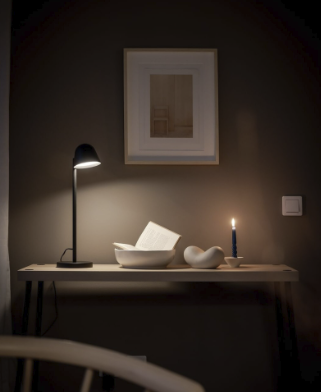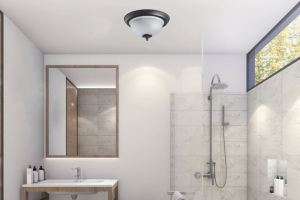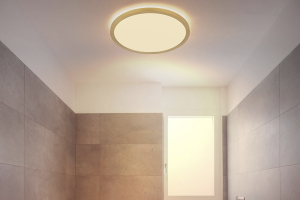Proper lighting is a fundamental aspect of any study environment, playing a crucial role in enhancing focus and productivity. The right lighting can significantly affect how we perceive our surroundings, influencing our mood, energy levels, and overall performance. In a study room, where concentration is paramount, inadequate lighting can lead to eye strain, fatigue, and even headaches.
Conversely, well-illuminated spaces can create a welcoming atmosphere that encourages prolonged periods of study and engagement with the material at hand. Natural light is often ideal, but it is not always available or sufficient, especially during late-night study sessions or in rooms with limited windows. Therefore, understanding the importance of proper lighting is essential for anyone looking to optimize their study habits.
Moreover, the psychological effects of lighting cannot be overlooked. Studies have shown that different types of light can evoke various emotional responses. For instance, warm light tends to create a cozy and relaxed environment, while cooler light can enhance alertness and concentration.
This means that the choice of lighting in a study room can directly impact cognitive function and retention of information. By strategically selecting and positioning lighting sources, students can create an environment that not only supports their academic endeavors but also promotes mental well-being. Thus, investing time and resources into understanding and implementing proper lighting solutions is a vital step toward achieving academic success.
Choosing the Right Study Room Table Lamp
Brightness and Adjustability
The lamp’s brightness is a critical aspect to consider, as it should provide sufficient illumination without being overly harsh or glaring. A lamp with adjustable brightness settings can be particularly beneficial, allowing users to tailor the light intensity to their specific needs at different times of the day or during various tasks.
Color Temperature and Ambiance
The color temperature of the light Decozux emitted by the lamp plays a significant role in creating an optimal study environment. Lamps that offer a range of color temperatures—from warm white to cool daylight—can help users find the perfect balance for their study sessions.
Design, Size, and Practicality
The design and size of the lamp are also important considerations. A table lamp should complement the overall decor of the study room while also being practical in terms of space. For smaller desks, a compact lamp with a flexible arm may be ideal, as it can be adjusted to direct light precisely where it is needed without taking up too much space. On the other hand, larger desks may benefit from more substantial lamps that provide broader illumination. Additionally, features such as built-in USB ports for charging devices or integrated organizers can enhance the lamp’s functionality, making it a versatile addition to any study area.
Setting Up Your Study Room Table Lamp
Once you have selected the perfect table lamp for your study room, the next step is to set it up effectively to maximize its benefits. The placement of the lamp is critical; it should be positioned in such a way that it illuminates your workspace without casting shadows on your materials. Ideally, the lamp should be placed on the opposite side of your dominant hand to minimize glare on your books or computer screen while you work.
This strategic positioning not only enhances visibility but also helps reduce eye strain during extended study sessions. Additionally, consider the height of the lamp; it should be tall enough to provide adequate light coverage without obstructing your line of sight. Furthermore, adjusting the angle of the lamp can also make a significant difference in how effectively it illuminates your workspace.
A flexible arm or adjustable shade allows you to direct light precisely where you need it most, whether you are reading, writing, or using a computer. It’s also essential to consider the surrounding decor and color scheme when setting up your lamp; a well-coordinated setup can create a harmonious atmosphere that fosters concentration and creativity. Lastly, ensure that your lamp is easily accessible and that its power source is conveniently located to avoid any disruptions during your study sessions.
By thoughtfully setting up your table lamp, you can create an inviting and efficient study environment.
Creating the Ideal Study Environment
Creating an ideal study environment goes beyond just selecting the right table lamp; it involves curating an atmosphere that promotes focus and minimizes distractions. One key element is organization; a clutter-free workspace allows for better concentration and efficiency. Ensure that your desk is tidy and that all necessary materials are within reach.
This not only saves time but also reduces mental clutter, allowing you to immerse yourself fully in your studies. Additionally, incorporating elements such as plants or artwork can enhance the aesthetic appeal of your study area while also contributing to a more relaxed state of mind. Another important aspect of an ideal study environment is controlling external factors such as noise and temperature.
If possible, choose a quiet location for your study room or invest in noise-canceling headphones to block out distractions. Furthermore, maintaining a comfortable temperature is essential for prolonged focus; too hot or too cold conditions can lead to discomfort and decreased productivity. Consider using fans or heaters as needed to create a comfortable atmosphere conducive to studying.
By addressing these various elements—organization, aesthetics, noise control, and temperature—you can cultivate an environment that not only supports effective studying but also enhances your overall learning experience.
Maximizing Productivity with the Right Lighting
Maximizing productivity through effective lighting strategies involves understanding how different lighting conditions affect cognitive function and energy levels. Bright, cool-toned lights are often associated with increased alertness and focus, making them ideal for tasks requiring high concentration such as reading or problem-solving. Conversely, softer, warmer lights can create a more relaxed atmosphere suitable for brainstorming or creative thinking sessions.
By varying the type of lighting used throughout different study activities, you can tailor your environment to suit your specific needs at any given moment. Additionally, incorporating natural light into your study routine can significantly enhance productivity levels. Whenever possible, position your desk near windows to take advantage of daylight; studies have shown that exposure to natural light can improve mood and cognitive performance.
However, during evening hours or in spaces lacking sufficient natural light, having an effective table lamp becomes essential. By combining both natural and artificial lighting sources strategically throughout your study sessions, you can create an adaptable environment that fosters sustained focus and productivity.
Benefits of Using a Study Room Table Lamp
The benefits of using a dedicated study room table lamp extend far beyond mere illumination; they encompass improved health outcomes and enhanced learning experiences as well. One significant advantage is reduced eye strain; proper lighting helps prevent fatigue associated with prolonged reading or screen time by providing adequate brightness without harsh glare. This is particularly important for students who spend long hours studying or working on assignments, as eye strain can lead to decreased productivity and motivation over time.
Moreover, having a designated table lamp allows for greater control over your study environment. Unlike overhead lighting that may be too dim or too bright for specific tasks, a table lamp can be adjusted to meet individual preferences and needs. This flexibility not only enhances comfort but also encourages longer periods of focused work by creating an inviting atmosphere tailored to personal preferences.
Ultimately, investing in a quality study room table lamp contributes significantly to both physical well-being and academic success.
Tips for Using Your Study Room Table Lamp Effectively
To make the most out of your study room table lamp, there are several practical tips you can implement to enhance its effectiveness in supporting your studies. First and foremost, regularly assess the brightness level of your lamp; if you find yourself squinting or straining to read text, it may be time to adjust the brightness or replace the bulb with one that offers higher lumens. Additionally, consider using lamps with adjustable color temperatures; switching between warm and cool light depending on the time of day or type of task can help maintain optimal focus throughout your study sessions.
Another useful tip is to incorporate breaks into your study routine while utilizing your table lamp effectively during these intervals. For instance, after every hour of focused work under bright light conditions, take a short break in softer lighting to allow your eyes to rest before returning to more intense tasks. This practice not only helps prevent fatigue but also refreshes your mind for continued productivity.
By being mindful of how you use your table lamp in conjunction with breaks and task variations, you can create a more sustainable and effective study routine.
Maintaining Your Study Room Table Lamp for Longevity
Maintaining your study room table lamp is essential for ensuring its longevity and continued effectiveness in supporting your studies over time. Regular cleaning is one of the simplest yet most impactful maintenance tasks; dust accumulation on lampshades or bulbs can significantly reduce light output and affect overall performance. Use a soft cloth or microfiber duster to gently wipe down surfaces regularly, ensuring that both the bulb and shade remain clear from obstructions that could hinder illumination.
Additionally, pay attention to electrical components such as cords and switches; inspect them periodically for any signs of wear or damage that could pose safety risks or affect functionality. If you notice any fraying wires or malfunctioning switches, address these issues promptly by either repairing them or replacing the entire unit if necessary. By taking proactive steps toward maintenance—such as cleaning regularly and monitoring electrical components—you can extend the life of your study room table lamp while ensuring it continues to provide optimal lighting conditions for years to come.






More Stories
Enhance Your Dining Room with Small Ceiling Lights
Enhance Your Study Space with a Bright Table Lamp
10 Small Dining Room Lighting Ideas for a Cozy Space